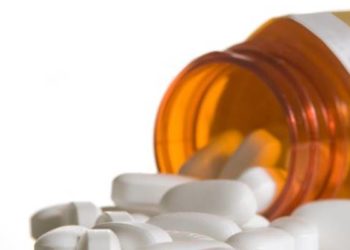Proadrenomedullin predicts severe community-acquired pneumonia among children
1. Among children with community-acquired pneumonia, proadrenomedullin more accurately predicted severe disease than established biomarkers such as C-reactive protein and procalcitonin.
Evidence Rating Level: 2 (Good)
Study Rundown: Health care encounters for community-acquired pneumonia (CAP) among children are both frequent and costly. Though clinical biomarkers like white blood cell count (WBC), C-reactive protein (CRP), and procalcitonin (PCT) offer a more objective assessment of disease status than clinical judgment, these markers have not been shown to possess significantly robust discriminatory value with regards to overall severity. Recently, proadrenomedullin (proADM) – a vasodilatory peptide with antimicrobial and anti-inflammatory properties – has shown promise as a clinical predictor of disease severity among adults with sepsis and lower respiratory tract infections. Data among children, however, are lacking. This prospective cohort study utilized data from the Catalyzing Ambulatory Research in Pneumonia Etiology and Diagnostic Innovations in Emergency Medicine (CARPE DIEM) study and sought to evaluate the predictive capacity of proADM across a variety of clinical scenarios. The primary outcome was disease severity after the initial encounter in the emergency department. It was found that proADM concentrations increased with increasing disease severity, and when included in a single adjusted model with CRP and PCT, only proADM was associated with severe disease in children with CAP. These findings were consistent among children with radiographic CAP. A strength of this study is its relatively large sample size. An important limitation, though, was the use of compositive outcomes with regards to disease severity. Individual outcomes may have varied dramatically within the discrete categorizations and, therefore, proADM levels may not be as predictive for some individuals compared with others. Additionally, the lack of availability of proADM level testing at some institutions may limit its applicability. Overall, this study suggested that proADM levels are more predictive of severe CAP compared with CRP and PCT, two established clinical biomarkers. It may play a role, thus, in triage and clinical decision making among children with CAP.
Click here to read the study in Clinical Infectious Diseases
Relevant reading: Biomarkers and Disease Severity in Children With Community-Acquired Pneumonia
In-depth [prospective cohort study]: Of the 1,142 children in the CARPE DIEM study, proADM levels were available for 369 (mean [SD] age = 6.1 [4.7] years, 48% female). Median proAMD concentration was 0.587 nmol/L, and increased with increasing disease severity: 0.53 nmol/L in mild, 0.56 nmol/L in mild-moderate, 0.61 nmol/L in moderate-severe, and 0.70 nmol/L in severe disease (p = 0.002). When examining individual components of the primary outcome, proADM was found to be significantly elevated among children who were hospitalized, required ICU-level care, had a length of stay greater than 24 hours, received IV fluid boluses or continuous IV fluids for more than 12 hours, or required supplemental oxygen. In the model that combined proADM with CRP and PCT, only proADM was associated with severe disease among children with CAP (OR 2.02, 95% CI 1.06 to 4.03), while CRP (OR 0.98, 95% CI 0.74 to 1.31) and PCT (OR 1.05, 95% CI 0.83 to 1.31) were not. Similarly, among children with radiographic CAP, only proADM levels were significant predictors of severe disease (OR 3.88, 95% CI 1.57 to 11.53). ROC curve analysis showed that a proADM threshold of 0.66 nmol/L maximized sensitivity and specificity of testing. At this cutoff, proADM had an area under the ROC curve (AUC) of 0.64 among children with suspected CAP and 0.77 among children with radiographic CAP.
Image: PD
©2020 2 Minute Medicine, Inc. All rights reserved. No works may be reproduced without expressed written consent from 2 Minute Medicine, Inc. Inquire about licensing here. No article should be construed as medical advice and is not intended as such by the authors or by 2 Minute Medicine, Inc.





